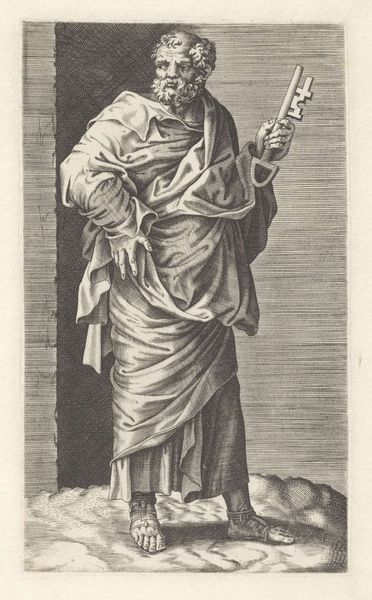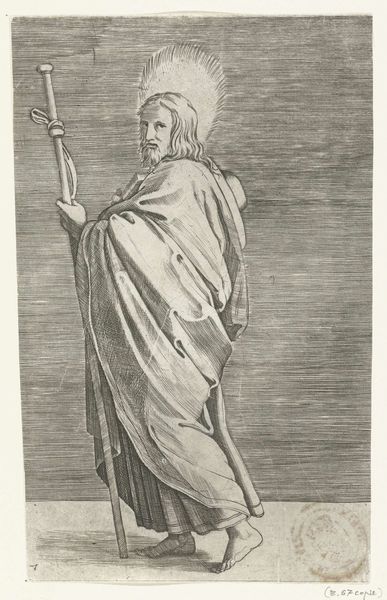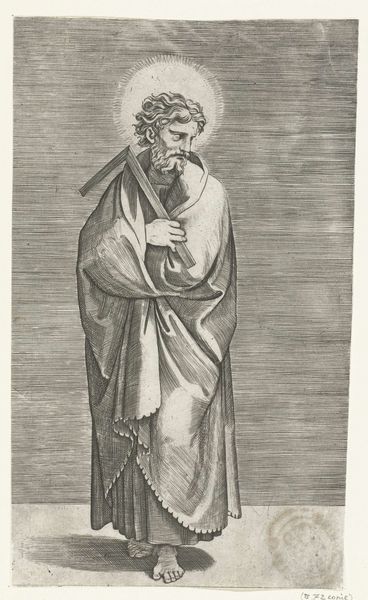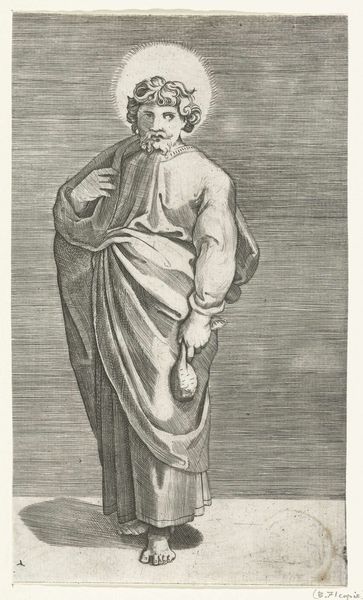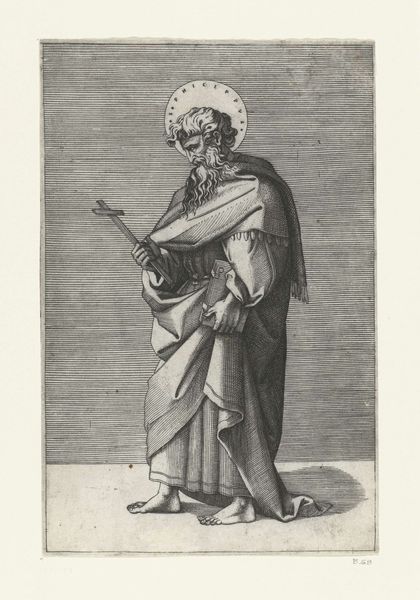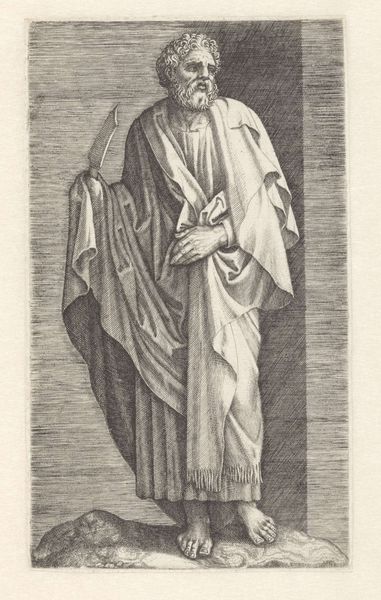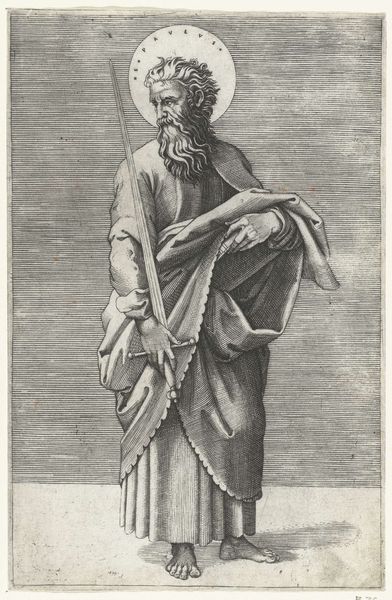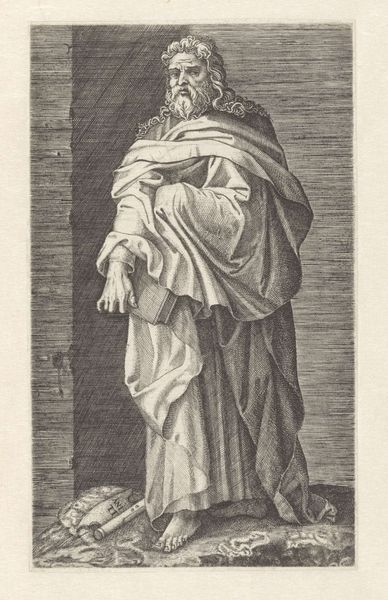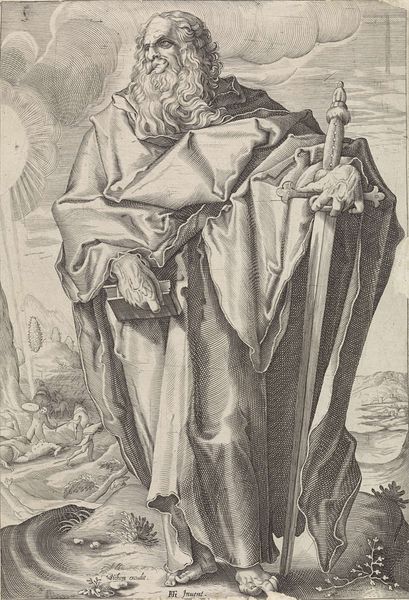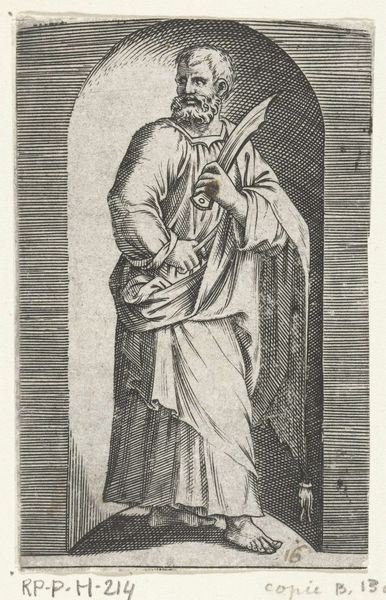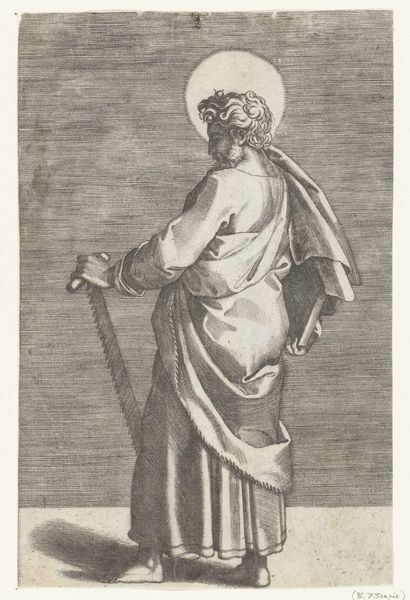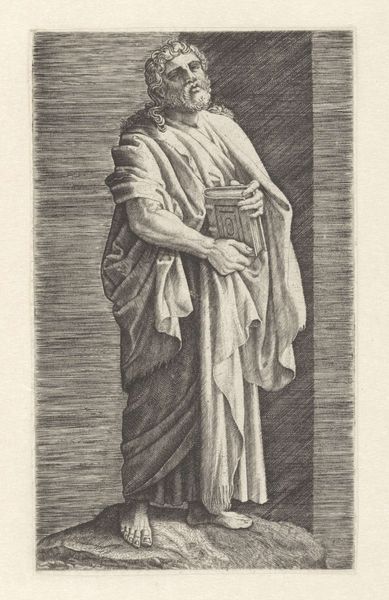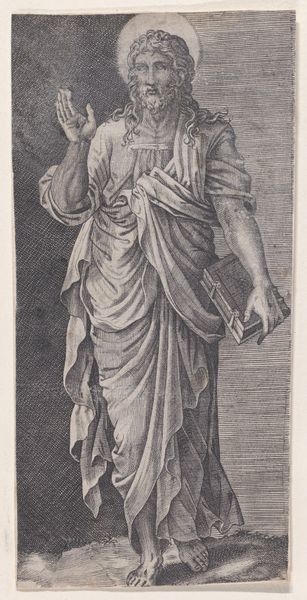
print, engraving
#
portrait
# print
#
old engraving style
#
caricature
#
figuration
#
italian-renaissance
#
engraving
Dimensions: height 200 mm, width 120 mm
Copyright: Rijks Museum: Open Domain
Editor: So, this engraving is called "Apostle Bartholomew with Knife," created sometime between 1517 and 1527 by Marco Dente. There's something quite stern about his gaze and stance, yet also vulnerable given his bare feet and the somewhat precarious-looking knife. How do you interpret this work? Curator: This image offers a powerful lens through which to consider the intersection of faith, power, and violence during the Renaissance. Note Bartholomew's intense gaze and the prominent knife. How does the artist portray him – as a victim, a defender, or something else? And what does it mean to depict a saint, figures traditionally associated with benevolence, holding a weapon of potential violence? This piece makes me wonder about the historical context. Editor: I see what you mean. It challenges that saintly stereotype. Could the knife symbolize something beyond physical violence, perhaps the painful truth or the cutting away of old beliefs? Curator: Exactly. Religious iconography was strategically deployed during the Reformation and Counter-Reformation to solidify power structures, and individual identity within those structures. How might this image, made during a period of immense religious and social upheaval, have been used to project or resist that authority? The directness of his gaze perhaps confronts the viewer with the very real cost of religious conviction. Editor: So, it’s not just a portrait of a saint, but also a commentary on the sociopolitical climate of the time? Curator: Precisely. And considering Dente’s skill as an engraver, consider the deliberate choices he made in representing Bartholomew and his attributes, which compels us to actively engage with its historical and societal context. What kind of emotional responses did it likely trigger in its original audience? Editor: This has changed how I see this print. It's more than a historical image; it’s an assertion of power, a struggle for meaning, or maybe a call for reflection, wrapped in religious imagery. Curator: Indeed, understanding this challenges traditional perspectives and fosters an engagement with the piece beyond aesthetics. I am always encouraged to expand the canon and question dominant narratives by focusing on individual experiences.
Comments
No comments
Be the first to comment and join the conversation on the ultimate creative platform.
